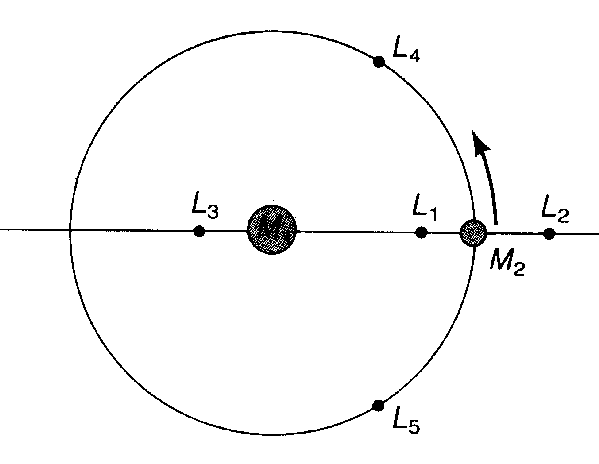
Consider two bodies orbiting one another. In a rotating frame of reference, the total force at any point is the sum of the gravitational force from the two bodies plus the centrifugal force of the rotating system.
It can be shown that there are certain points where the net force acting on an object is zero. These points are called the Lagrange Points.

It can also be shown that:
What about Earth-Moon? Mmoon/Mearth = 0.012, so again L4 and L5 should be stable.
However, we don't find any Earth Trojan asteroids -- perhaps
L4 and L5 are not stable after all. Why might
these points be unstable in the Earth-Moon system?